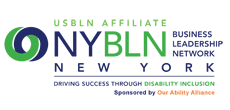Time To Put a Stop to Cyberbullying
March 10, 2015A Call for Entrepreneurship Programs in New York City
April 27, 2015Highlighting people with disabilities: The Super Bowl and Changing the Face of Beauty
By Julie M. Gerhart-Rothholz (@jmgerhart)
Each year, the Super Bowl is watched as much for its commercials as for the football game. I wonder how a company makes a decision to spend millions for 30 seconds, so I watch the game, but I watch the commercials more closely. This year, I was pleasantly surprised to see that three, yes three, Super Bowl commercials featured individuals with disabilities, and it made me wonder, is 2015 the tipping point for more inclusive advertising?
The first Super Bowl commercial including someone with a disability was for Toyota Camry, and it featured Dancing with the Stars alum and US Paralympic Snowboarder, Amy Purdy with a voiceover by Muhammad Ali. The commercial showed Purdy snowboarding, dancing, running, biking, and driving a Camry. The commercial featured the tagline “one bold choice leads to another” and featured the #OneBoldChoice hashtag.
To view the commercial, click here. http://www.superbowlcommercial2015.com/toyota/
If you were looking closely at one of the McDonald’s commercials, you probably saw adorable 8-year old, Grace Ramsburg, who has Down syndrome, the commercial promoting the “Pay with lovin’” promotion, which ran from February 2 through February 14. This promotion had customers randomly selected to “pay with lovin’ as the only required form of payment. People in the commercial were asked to call their mom and tell them her that they love her. Others were asked to dance or to tell their son what they love about him. Grace appears near the end of the commercial with an enormous smile on her face after her family is told their total payment due is one big family hug.
To view the commercial, click here. http://www.superbowlcommercial2015.com/mcdonalds/
The third commercial that featured an individual with a disability was Microsoft’s commercial featuring Braylon O’Neill, who was born without tibia and fibula bones in both of his legs. The commercial shows how Microsoft technology helps Braylon run, golf, play baseball, and do activities typical of a child his age. The question asked on the screen at the beginning of the commercial is “what can you do?”, and that question is answered throughout the commercial from Microsoft’s perspective.
To view the commercial, click here. http://www.youtube.com/watch?v=wLXRt-qRBfU
Since the Super Bowl, there have been at least 2 more commercials featuring individuals with disabilities. Comcast has a commercial entitled Emily’s Oz, where a beautiful, imaginative 7 year-old who is blind describes what her Wizard of Oz would look like. The commercial introduces Comcast’s Talking Guide, a service available for those with visual impairments, which describes what is on the screen.
To view the commercial, click here: http://www.comcast.com/emilys-oz?CMP=KNC-IQ_ID_85031494-VQ2-g-VQ3–VQ6-77779792288-VQ16-c-pkw-%2Bemilys%20%2Boz-pmt-b&iq_id=85031494
There is also a pet-store commercial that starts off with a man jogging, and that man has a prosthetic leg.
So far this year, at least 5 commercials have highlighted individuals with disabilities, and there is a broader effort underway to ask 100 retailers in 2015 to feature people with disabilities in their advertising. The effort is called Changing the Face of Beauty. If you frequent Facebook or Twitter, you may see individuals including a picture of their child naming a specific company, using the following hashtags promoting the program: #imready, #15in2015, #100in2015, and #ChangingtheFaceofBeauty. The campaign was started by Steve English and Katie Driscoll who wanted to show the world how beautiful all people are and who both thought it was important to have all people included in advertising. The campaign is receiving much attention in the special needs community, and many individuals are using the hashtags. The original goal for 2015 was to have 15 retailers agree to feature individuals with disability in their advertising, but by February’s end, there were nearly 40 participants, and the goal was revised to 100.
Recently, my son was even featured in an article posted online about the campaign. http://themighty.com/2015/01/these-wonderful-faces-are-changing-the-way-we-define-beauty/
The Changing the Face of Beauty campaign is a success, but there is always room more advertisers willing to feature people with disabilities.
To learn more about the Changing the Face of Beauty campaign, visit www.changingthefaceofbeauty.org.
Already in 2015, progress is being made toward inclusive advertising. This could be a year of big changes, a year where seeing individuals with disabilities represented in commercials and printed advertising becomes the norm.
In 2015, I’m taking action. I’ve done two things that I think can make a difference. I now use the Changing the Face of Beauty Hashtags (for clothing retailers, children’s gyms, etc.). My hashtags have even been liked and retweeted by retailers, so hopefully that will bring about change. I have even received a letter from a CEO thanking me for appreciating inclusion at his company. This company has already shot their inclusive print ads which will debut later this year. The other tactic I use is thanking the advertisers who have included people with disabilities. My hope is that the positive messages will encourage them to continue and increase their inclusive practices. I think 2015 will be a big year for change, and I will do what I can to help that change along. I hope you will too


